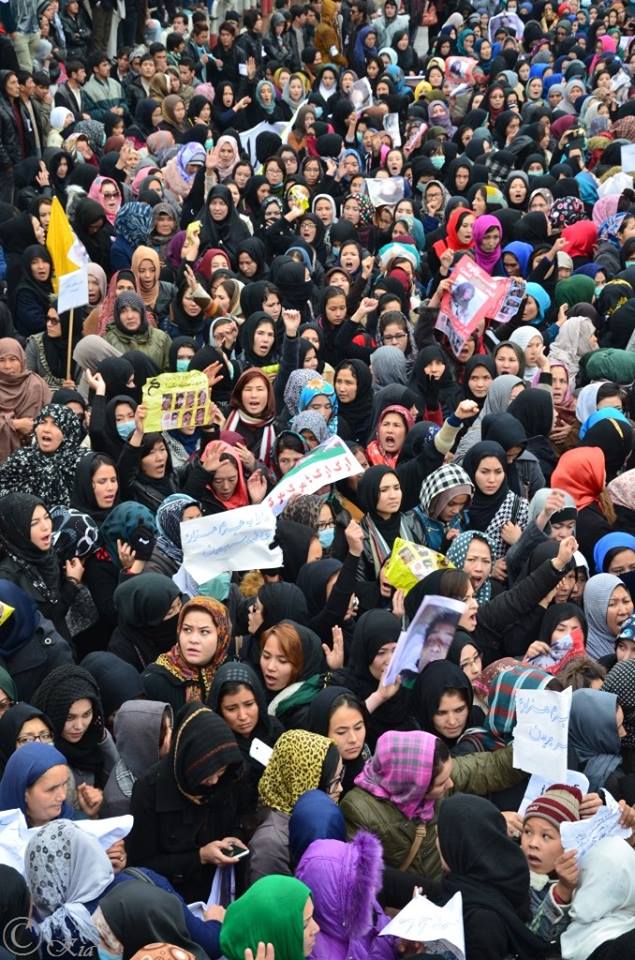
#KabulProtest was historic. Now, it’s for the govt to take on Taliban, IS
Reading time: (Number of words: )
When the Taliban were toppled in 2001, Afghanistan began to dream of a free, peaceful, stable, democratic country. Fourteen years on, for a host of reasons, that dream has soured.
The Taliban are back, more brutal than ever, and the new terrorist network of IS has reared its head. Their atrocities are growing ever more horrifying by the day. Made desperate, the Afghans are fleeing in their thousands to seek shelter, and hopefully a better life, abroad.
Of late, the terrorists have shown such barbarity that the country’s murderous civil wars of the last century seem almost civilised. Then, at least, the warring factions would abide by some tribal rules of war. Today’s terrorists have no such qualms.
They are murdering innocent Afghans for no other reason than their ethnic, lingual and political affiliations. In just three days after capturing Kunduz on 28 September, the Taliban fighters killed hundreds of people, including women and children, and reportedly raped women belonging to non-Pashtun tribes.
The latest atrocity was committed last week. It was so heart-wrenching that hundreds of women took to the streets of Kabul in protest.
The terrorists executed a family of seven they had kidnapped five months ago — four men, two women and girl all of nine years. Her name was Shukria Tabassum.
Initially, the killings were blamed on the IS but it later emerged that a Taliban group led Mullah Dadullah Mansour was also involved. The family was from Ghazni’s Jaghuri district, which is inhabited by ethnic Hazaras and is known for its high literacy rate.
The terrorists have been frequently kidnapping, and killing, ordinary people, mostly Hazaras, traveling across the country over the past few years.
When the throat-slit bodies were handed over to the villagers, they were outraged. They refused to bury the bodies, and thousands of them marched towards Kabul, carrying the slain family’s coffins on their shoulders.
By the time they arrived in the western district of Kabul, which is home to a large Hazara population, on 10 November, the march had swelled many times over.
On 11 November, Kabul witnessed a historic march of tens of thousands of people, including a large number of women, towards the Presidential Palace.
The protesters raged against the regime of Ashraf Ghani and Abdullah Abdullah for failing to curb the Taliban and IS violence and providing security to citizens.
The Presidential Palace guards, who had never witnessed such a massive protest, opened fire and injured eight people. Yet, the protestors stood firm, leaving only around midnight after after an assurance from the government that their demands will the considered.
Complex web of terror
Immediately after the tragedy came to light, Afghan officials had blamed Pakistan’s ISI. Mullah Dadullah belongs to the breakaway Taliban faction of Mullah Mohammad Rasool, a rival of the main faction led by Mullah Akhtar Mohammad Mansour.
Rasool’s faction recently accused Mansour of being an ISI stooge who didn’t represent the real followers of the late Mullah Omar. Indeed, they went so far as to accuse Mansour of murdering Omar.
The IS fighters in the country have declared their loyalty to Rasool, thus pitting them against the official Taliban. If that wasn’t complicated enough, Rasool’s group has declared its willingness to talk to the Afghan state.
How can Afghanistan pull out of this morass of terror and barbarity? Perhaps, the country’s government can start by asking itself the following questions.
The various factions of Taliban, in spite of their differences, subscribe to the same ideology of terror. Can the country really hope for peace from any of them?
Most of the current leaders, including those from the erstwhile Northern Alliance, are losing their support bases due to their perceived ambiguity and hypocrisy. Can they recover the lost trust, and how?
Does the country have credible next generation leaders? And what is their vision?
How long can the Ghani-Abdullah regime survive the crisis brought on by the Taliban onslaught and the growing public anger?
Will the growing violence and this government’s failure to curb it force the international players, particularly the US, to rethink their Afghan strategy?
Kabul: Protest against Hazara Genocide in Afghanistan11/11/2015Photo by: Jawad Hamdard Kia#IAmHazara...
Posted by Kabul Press on Thursday, November 12, 2015

Dr. Hussain Yasa is the former Editor in Chief of the Daily Outlook Afghanistan. At the moment he lives in Germany in self-imposed exile

Poems for the Hazara
The Anthology of 125 Internationally Recognized Poets From 68 Countries Dedicated to the Hazara
Order Now









